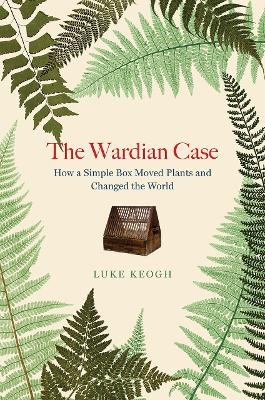
The Wardian Case
University of Chicago Press (Verlag)
978-0-226-71361-8 (ISBN)
Roses, jasmine, fuchsia, chrysanthemums, and rhododendrons bloom in gardens across the world, and yet many of the most common varieties have roots in Asia. How is this global flowering possible? In 1829, surgeon and amateur naturalist Nathaniel Bagshaw Ward placed soil, dried leaves, and the pupa of a sphinx moth into a sealed glass bottle, intending to observe the moth hatch. But when a fern and meadow grass sprouted from the soil, he accidentally discovered that plants enclosed in glass containers could survive for long periods without watering. After four years of experimentation in his London home, Ward created traveling glazed cases that would be able to transport plants around the world. Following a test run from London to Sydney, Ward was proven correct: the Wardian case was born, and the botanical makeup of the world’s flora was forever changed.
In our technologically advanced and globalized contemporary world, it is easy to forget that not long ago it was extremely difficult to transfer plants from place to place, as they often died from mishandling, cold weather, and ocean salt spray. In this first book on the Wardian case, Luke Keogh leads us across centuries and seas to show that Ward’s invention spurred a revolution in the movement of plants—and that many of the repercussions of that revolution are still with us, from new industries to invasive plant species. From the early days of rubber, banana, tea, and cinchona cultivation—the last used in the production of the malaria drug quinine—to the collecting of beautiful and exotic flora like orchids in the first great greenhouses of the United States Botanic Garden in Washington, DC, and England’s Royal Botanic Gardens, Kew, the Wardian case transformed the world’s plant communities, fueled the commercial nursery trade and late nineteenth-century imperialism, and forever altered the global environment.
Luke Keogh is a curator and historian. Among his many awards and prizes are the New South Wales Premier’s General History Prize, the Sargent Award from the Arnold Arboretum of Harvard University, and the Maurice Daumas Prize from the International Committee for the History of Technology. Currently he is lecturer in history at Deakin University in Melbourne, Australia. For more information, visit www.lukekeogh.com
Introduction
Part 1. Possibilities
1. Experiments with Plants
2. A Brief History of the Plant Box
3. Global Gardens
4. Science at Sea
5. On the Move
6. House of Ward
Part 2. Panoramas
7. Logistics of Beauty
8. Kew’s Case
9. Case of Colonialism
10. Burning Questions
11. Wardian Cages
Conclusion: Case Closed?
Acknowledgments
Notes
Index
| Erscheinungsdatum | 02.01.2020 |
|---|---|
| Zusatzinfo | 19 color plates, 40 halftones |
| Sprache | englisch |
| Maße | 152 x 229 mm |
| Gewicht | 594 g |
| Themenwelt | Geisteswissenschaften ► Geschichte ► Regional- / Ländergeschichte |
| Naturwissenschaften ► Biologie ► Botanik | |
| ISBN-10 | 0-226-71361-X / 022671361X |
| ISBN-13 | 978-0-226-71361-8 / 9780226713618 |
| Zustand | Neuware |
| Informationen gemäß Produktsicherheitsverordnung (GPSR) | |
| Haben Sie eine Frage zum Produkt? |
aus dem Bereich


